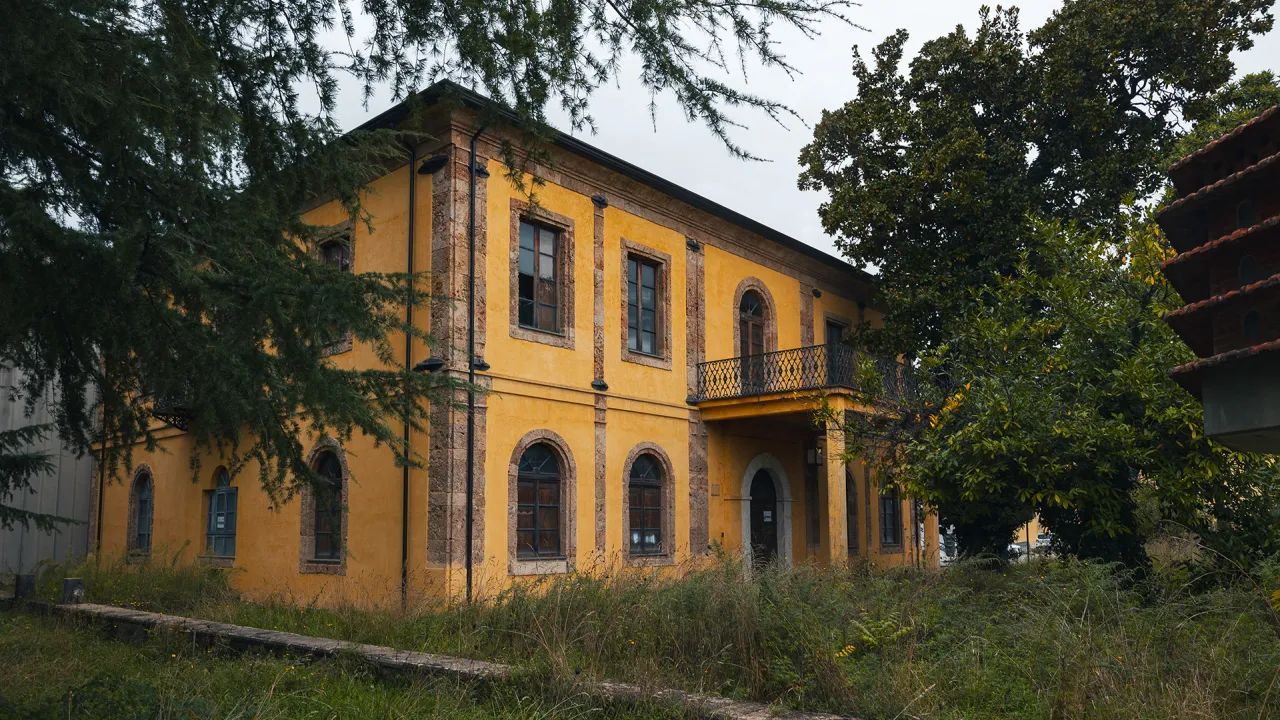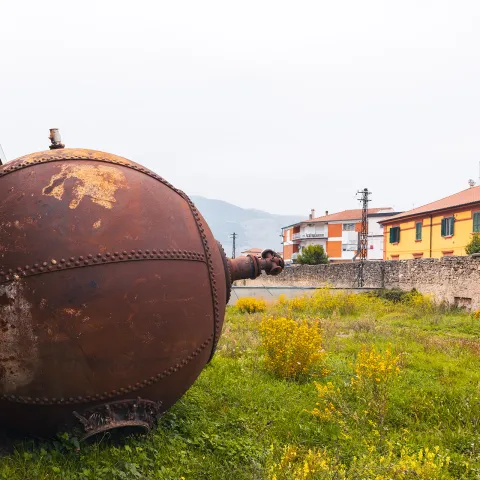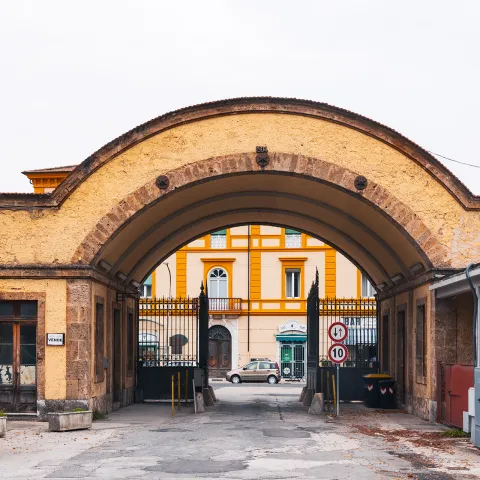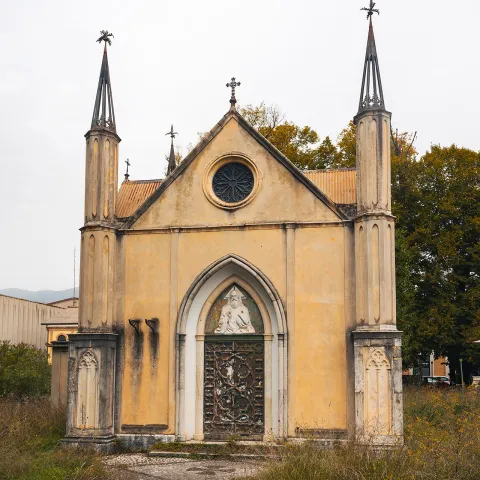Meridionale Ex Paper Mill
The Liri Paper Mill was founded in 1836 by Neapolitan entrepreneur Nicola Sorvillo on the left bank of the Liri River, near the Fibreno Paper Mill

Over time, the surrounding area developed into a true working-class neighborhood on the outskirts of the town, taking on the characteristic name of Borgonuovo ("New Town").
In 1873, the Turin-based Meridionali Paper Mill Company acquired Sorvillo's company. In 1908, the company expanded further by incorporating the neighboring Fibreno Paper Mill and in 1930, the former Carnello wool and paper mill. All the factories owned by the company in the Isola del Liri and Sora areas were expanded, adapted to new production needs and connected to each other by a network of internal railway lines, which linked them to the Isola del Liri railway station. These "little trains" transported materials and workers along narrow rails that even crossed the Fibreno River on small iron bridges. In the first decades of the century, the company had become the largest domestic paper industry, exporting its products to England, France and the Orient.
Despite the size of the paper mill, some isolated buildings and smaller complexes from its earlier stages of development are still identifiable today. These include structures from the original factory and its subsequent expansions in the early 20th century. Among the earliest constructions in fact are the current office building, the neo-Gothic style chapel and the former “rag” building. The expansion that followed its acquisition by the Meridionali Paper Mill Company includes the buildings near the current entrance: the monumental propylaea, surmounted by a large arch, which housed the gatehouse, the nursery school and the infirmary. Also dating to this period are the industrial sheds used as workshops, depots and locomotive shed.
PHOTO GALLERY

VIDEO






